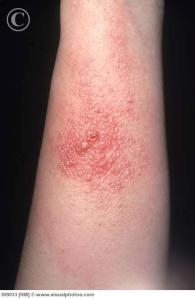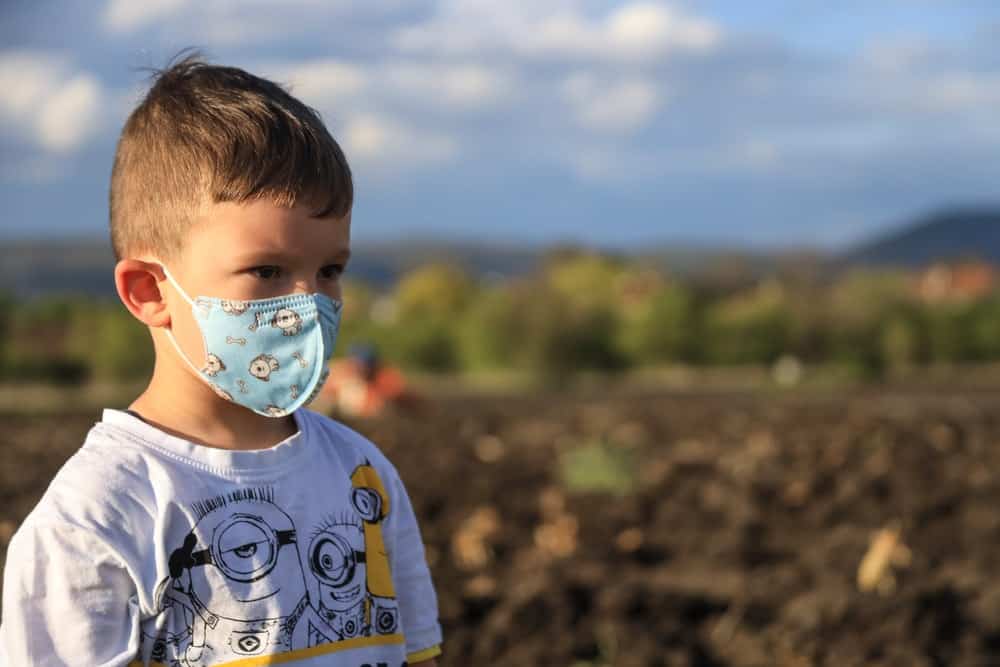Table of Contents
Introduction
Allergies are extremely common in children, in fact, the Asthma and Allergy Foundation of America (AAFA) has estimated that about 40 percent of children in the USA have allergies caused by one or more of the following:
- Medicine
- Food
- Insects
- Latex
- Mold
- Pets
- Pollen



However, it is important to note that many allergies decrease or even disappear with age.
Clifford Bassett, the medical director of Allergy & Asthma Care of NY and an allergy specialist of New York University, has been quoted as saying, “The only good thing about getting older is that in many cases, allergies are less prevalent.”
Over the years you may have noticed that as you get older, there are certain substances that trigger allergy symptoms in yourself although you were able to tolerate them in the past.
This is not your mind playing tricks on you. It is a real phenomenon. On the other hand, you or your child may outgrow some allergies that you had earlier in life.
Why do allergic reactions develop?
Allergens are substances that cause an allergic reaction. Common allergens are pet dander, dust, pollen, peanuts, tree nuts, fish, and shellfish. They may enter the body by different routes:
- skin contact
- inhalation
- eating
- drinking
When an allergen gets in the body, the immune system over-reacts and behaves as if the substance is foreign and dangerous; In an effort to protect the body, specific blood cells called Immunoglobulins (IgE) are produced and they cause the release of histamine and other chemicals. The resulting effects are the symptoms of an allergic reaction. The reaction can be mild, moderate, or severe.
A mild reaction may present as a rash in a single area for example an earring might only affect the ear lobe.
A moderate reaction might cause a rash to develop all over the body or if it is a food ingredient, the person might have nausea, vomiting and or diarrhea.
A severe reaction might cause the mouth, tongue, and lungs to get swollen and prevent the person from being able to breathe. This is called anaphylaxis and it is life-threatening.
What Are The Common Symptoms Of Allergies?
Although the body might react to different substances, the symptoms are usually the same:
- Watery, itchy red eyes (Conjunctivitis)
- Sneezing, runny, stuffy, and itchy nose (Rhinitis)
- Itching and sometimes swelling of the lips, mouth, tongue, and throat
- Coughing and clearing of the throat
- Wheezing and difficulty breathing (bronchospasm or asthma)
- Nausea, vomiting and abdominal pain
- Diarrhoea which may be blood stained
- Skin rash which might be a flare up of eczema or red, raised, itchy rash (Hives)
- Dizziness and light-headedness
- Anaphylaxis – this might involve all the body’s systems
Here is an explanation of some of the terms mentioned above:
- Eczema is a dry, itchy, red skin rash that usually appears on the cheeks and other parts of a baby.
- Hives are raised, itchy, red patches that appear on one or several parts of the body.
- Bronchospasm is the sudden narrowing of the smaller branches, or bronchioles, of the lungs resulting in difficulty moving the air that we breathe in and out of the lungs.
- Asthma is a more severe and repeated form of bronchospasm. This usually occurs after the first year of life
- Anaphylaxis is a serious, life-threatening allergic reaction in which the airway gets blocked from extreme swelling of the lips, tongue, throat, and windpipe. The person’s blood pressure falls rapidly, and they may become unconscious and die if not treated immediately.
How to Tell If Your Child Is Having an Allergic Reaction?
There are different ways that the body might react to allergens. There might only be localized reactions, example:
- One patch of skin may get red, itchy bumpy and swollen as in contact dermatitis from poison ivy.
- The eyes and nose might get red, runny, itchy, and swollen when in contact with dust or pollen.
- The stomach and intestines might react to some foods or ingredients in a meal by causing the person to have vomiting, diarrhoea, and abdominal cramps.
On the other hand, the reaction might be widespread and affect more than one part of the body, gradually or at the same time.
Milk allergy in babies may also cause symptoms that are not related to the digestive system. They might have:
- frequent nasal stuffiness
- runny nose
- cough
- difficulty breathing or bronchospasm
- eczema or hives
- swelling, itching, or a rash around the mouth and on the chin because of the milk being in contact with the chin.
The commonest allergies in children are seasonal allergic rhinitis, or hay fever.
Over 6 million children are affected each year. These symptoms are usually worse when they are outdoors and result from mold spores and pollen from trees, grasses, and weeds.
Allergic Conjunctivitis
Contact Dermatitis

Hives
Eczema
Do Allergies Suddenly Come Up?
Most children develop allergies because they inherit certain genes from their parents.
They might not have the same allergies as their parents, but they inherit the tendency to react to certain allergens.
They are diagnosed as being atopic.
This means that they are allergy prone and might have certain symptoms such as eczema, bronchospasm, rhinitis, and lactose intolerance in infancy. As these babies get older, they tend to react to several different allergens.
Many people develop allergies for no known reason and in such cases, it can be described as “suddenly coming up.”
For example, a person might grow up eating lots of ripe bananas but suddenly in their 20’s the smell or taste of the delicious fruit causes a feeling of nausea, headache, or even vomiting.
Pediatric allergist, Dr. Kathryn Wessell and other leading experts in Allergy and Immunology think that allergies evolve in children.
The child is born with the allergy tendency and the symptoms show up over time. They refer to this as the “allergy march.”
The progression starts with eczema in infancy, then as the child gets older, other allergy symptoms usually appear in the following order:
Food allergies usually appear around 1 year of age
Asthma usually appears in the second year of life
Allergic rhinitis may begin in infancy if the triggers are indoors, example a pet or dust mites.
However, outdoor allergens such as pollen may trigger this allergy around 5-6 years of age when the child is repeatedly exposed to them.
Most people outgrow this problem by the age of 20.
These symptoms may overlap and may also occur in a different order.
Do allergy symptoms get worse with age?
Allergy symptoms may get better or worse over time.
A baby that reacts with bronchospasm may eventually grow into a child who gets repeated asthmatic attacks when he or she encounters a trigger or allergen.
These attacks might have different triggers, and this might eventually affect the life span of the individual.
Some adults get more severe runny nose when exposed to pollen or dust, but over the years they avoid it when possible or use medication.
The reasons for the changes in allergy symptoms are unclear but several theories have been put forward including environmental, infectious and psychological factors.
How to prevent allergies
Avoid the allergen
It might not be possible to prevent allergies but if there is a strong family history of allergies and the baby is at risk of having an immune system that over-reacts to relatively harmless substances (atopic), there are some people who suggest avoiding foods that are known to commonly cause allergic reactions (allergenic).
Examples include wheat, egg white, seafood, and nuts.
Early introduction of the allergen
Recent guidelines suggest that some foods might become less allergenic if they are introduced quite early in the life of a child who is at risk for a specific allergy; example introducing peanut flavored formula or peanut butter to an infant between 4-6 months of age. This theory is still being investigated regarding the prevention of peanut allergy.
Breastfeeding
Breastfeeding is widely recommended for babies who are at risk for allergies. The mother might be advised to avoid certain allergenic foods
Blood Testing
The older child may be tested by taking some blood and sending it to the laboratory to check which foods or substances are likely to cause an allergic reaction in that individual.
Skin Testing
There are skin tests that an allergist can perform to detect what might cause an individual to have an allergic reaction and they are able to desensitize some individuals so that they are able to tolerate the allergens without the immune system over-reacting.
Can your allergies change over time?
Yes.
A child may outgrow allergies, but they can also reappear in certain stressful circumstances such as a flare-up of eczema in extreme temperature changes, or even develop new ones such as itchy skin when in contact with wool or nickel.
A child with allergic reactions to a pet may grow up with the pet in the home and over time may no longer react when in the presence of the pet.
However, if he or she leaves home for a few months then returns home, the allergy symptoms may re-appear, and the child’s pet allergy then recurs.
A child who was able to drink lots of milk in early life might become an adult who cannot taste dairy products without getting an allergic reaction.
This is different from lactose intolerance.
It is important to note that food allergies are different from food intolerance.
The over-reaction of the immune system is responsible for the symptoms of an allergic reaction because something in the food is recognized as being foreign and harmful to the body.
Food intolerance is less serious and there is no immune component.
Some allergies develop as the child gets older while others tend to get better or even disappear.
In most cases, the baby who had severe eczema may grow into an adult who only gets some flare-ups of an itchy rash affecting the inside of the elbows and behind the knees.
On the other hand, some allergic reactions get worse each time the person encounters the allergen.
There are some types of allergies that seem to never go away.
Here are some common food allergies that are more frequent in children than adults:
- Peanuts
- Tree nuts such as pecan or walnuts
- Eggs mainly the white or albumen
- Cow’s milk protein which may be casein or whey; not to be confused with lactose intolerance
- Wheat, which may be mistaken for gluten sensitivity
- Soy protein
- Adults may react to any type of food, but the commonest ones are:
- Shellfish, example lobster, shrimps, crab
- Peanuts
- Tree nuts
- Fish, both fresh and saltwater species
As you can see, fish and shellfish allergies tend to develop with age, as the immune system gets more mature.
Nut allergies usually present earlier in childhood but tend to persist throughout a person’s life.
Other common allergies that tend to develop with age include hay fever, hives, pet allergies, conjunctivitis, dust, specific foods, and specific chemicals.
About 20 percent of children outgrow their allergy to peanuts.
Approximately 60-80 percent of children who have allergies to eggs or milk no longer react by the age of 16.
Among children younger than 5 years old, about 6-8 percent have food allergies but only 3-4 percent of adults have this problem.
Although the evidence is clear that allergies change with age, doctors are not quite sure why, but they think part of the reason is because the immune system becomes accustomed to some of the childhood allergens after a while, however new ones might develop over time.








1 thought on “How Your Child’s Allergies Can Change With Age”
Comments are closed.